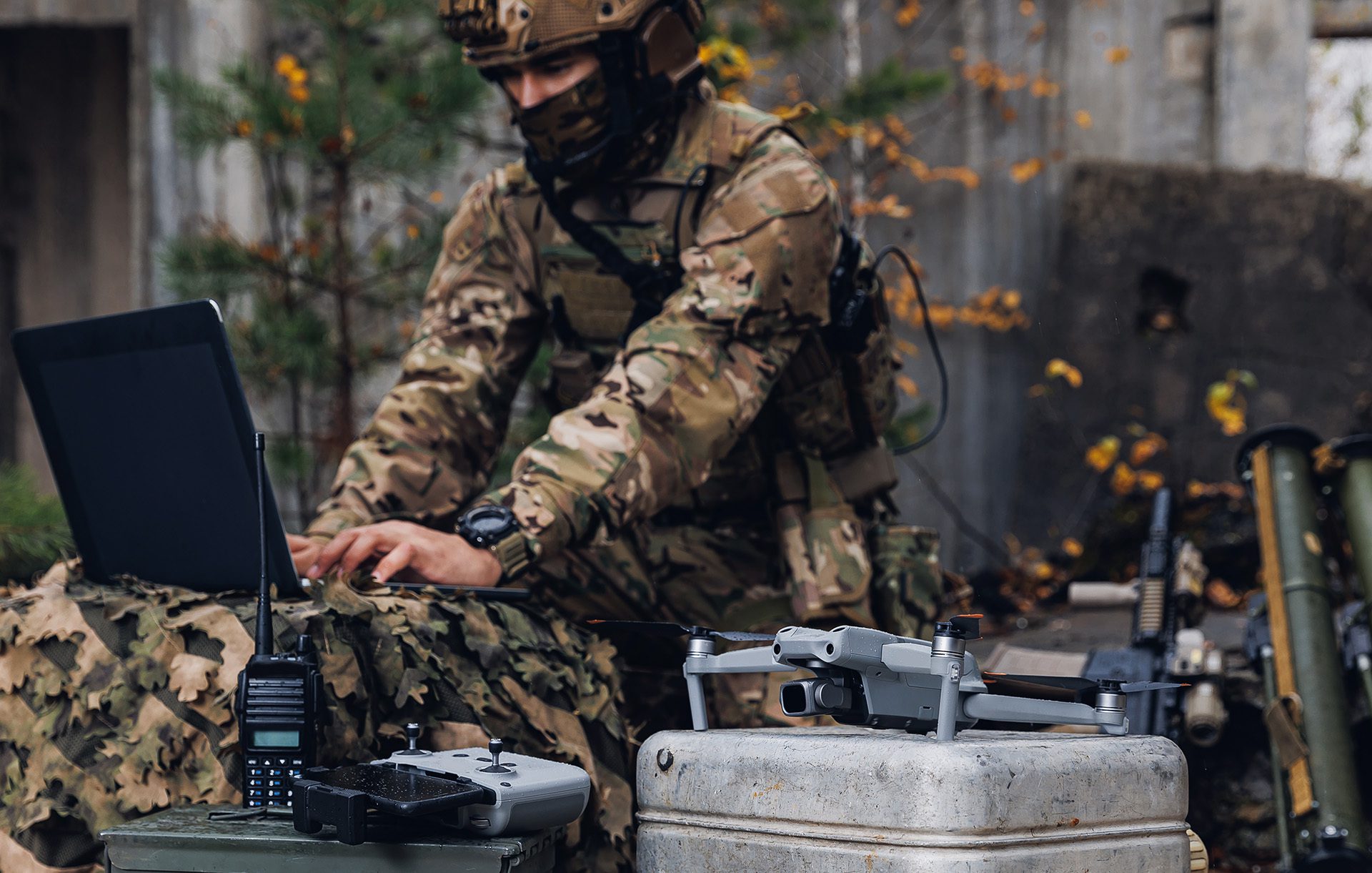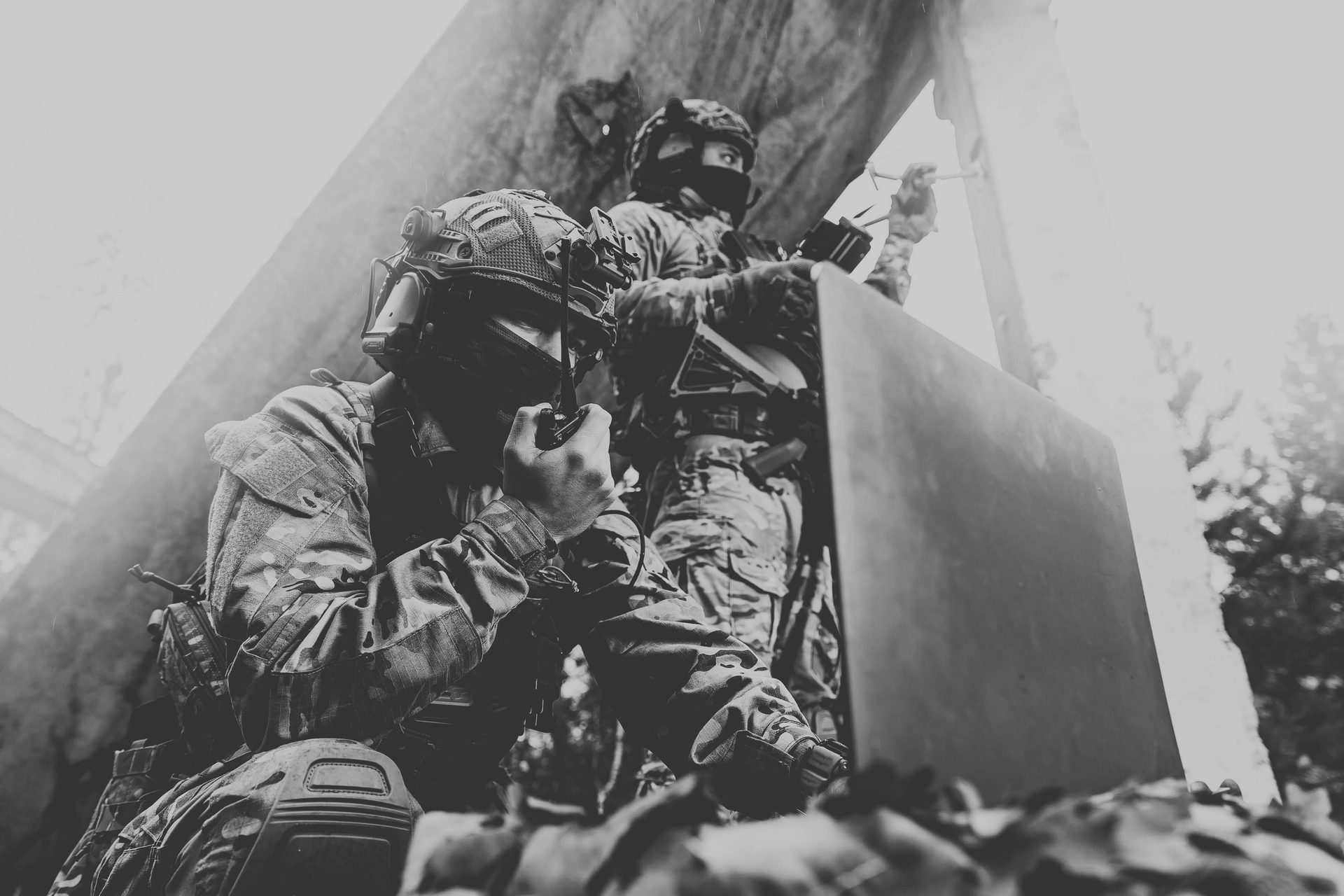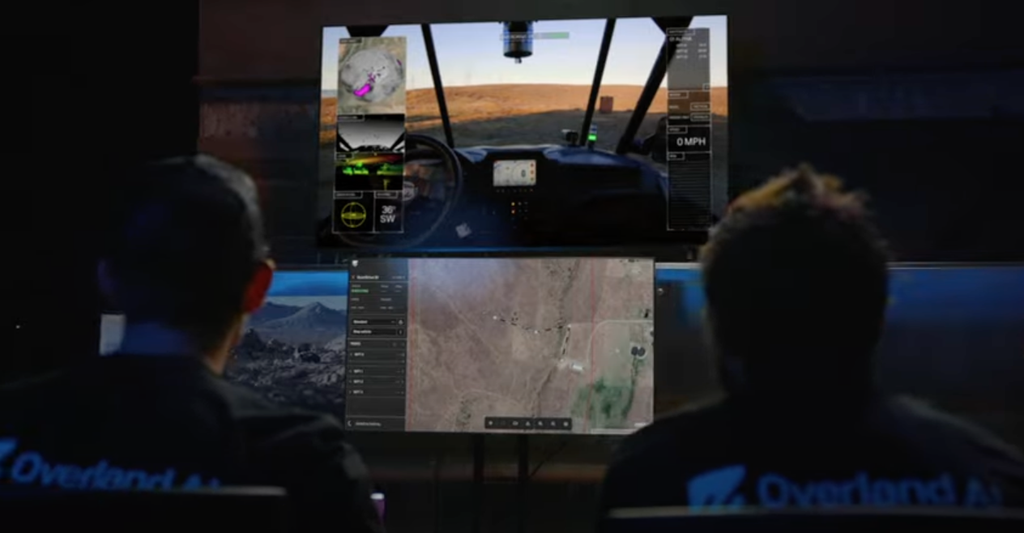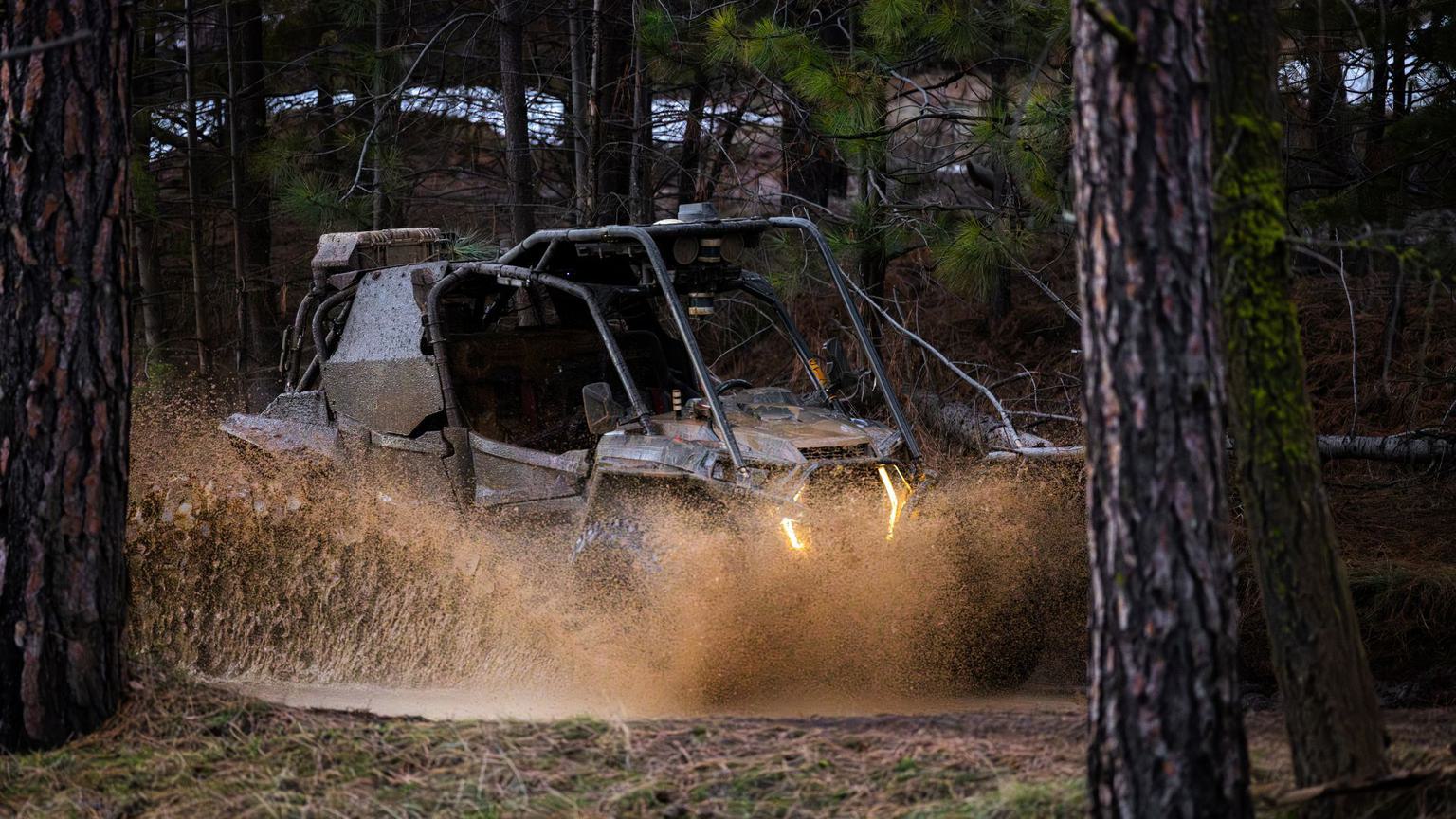
Defense

Matt McElvogue & Tim Heiser

Matt McElvogue
Vice President, Design

Tim Heiser
Director, Defense Programs
Improved UX and UI can enable smarter use of AI and automation, helping warfighters manage data-rich environments and make faster, more informed decisions.
The Defense Department’s focus on joint and multi-domain operations is rapidly increasing the pace of technology development – everything from tactical radios and hand-held controllers for first-person-view quadcopters to command and control consoles for ISR platforms.
For systems to be effective in multi-domain operations, they need to be designed to accelerate decision-making, not slow it down. This requires intuitive interfaces and well-thought-out processes that help users solve problems efficiently.
Matt McElvogue, vice president of design, and Tim Heiser, director of defense programs, talk about how UX/UI plays a critical role in shaping the future of military operations.
How is UX/UI defined through a military lens?
Tim Heiser: When I hear military customers speak, they need two things: capacity and capability, and they need it now. At Teague, we view good UX design as being able to translate technology to the human who needs to use it, allowing prioritized and simplified decision making in an already stressful and demanding situation.
That’s the lens that the military is starting to see through as well. The days of training to an asset with a three-inch thick binder are starting to wane. There’s a place for the binder, but supplementing or replacing that approach with intuitive systems and design helps field capability quicker.
Matt McElvogue: There are also usability issues when it comes to automation and the amount of data that’s generated by new sensing technology. There’s more information to sort through than there has been in the past. Software has to evolve to allow the human user to have some agency – to understand what’s happening, know when they need to plug in and direct something, and understand the repercussions of their actions.
The DoD is working to bring in non-traditional defense companies. What role does UX/UI play in the widening of this aperture?
TH: If you think about the amount of technology that’s coming to the military – from research labs across the multitude of private and government services, to companies on the commercial end – you no longer have just the three to five big primes developing the ‘next thing.’
Innovation is coming from different spaces within the market in the defense arena, and that’s new for the military. It’s no longer that you procure capability and technology developed over 20 years, mature it, and field it. It’s coming much faster and from different angles. All of it has the same intent, which is to put the best technology in the hands of the warfighter faster than we’ve ever done it before.
We’re at a moment in time when a new generation is coming into the military and entering command structures...they’re asking for better UX as they’re brought into the process of evaluating new equipment and interfaces.
MM: Prioritizing decision-making is probably more critical today than it’s ever been. We’re at a moment in time when a new generation is coming into the military and entering command structures. They’ve grown up post-Internet, with smartphones being something they had in their pockets from an early age. They’re used to using products that have had millions of dollars put into their user experience to make them easy to use.
Whether they realize it or not, they’re bringing that perspective to the tools that they use at work. They’re asking for better UX as they’re brought into the process of evaluating new equipment and interfaces. That’s leading traditional defense companies to seek out new partners to better serve the needs of the military and improve their product offering.
Teague works with many of these partners, including Overland AI, a company on the leading edge of autonomous land systems. Their tech is used to navigate complex, off-road terrain at operationally relevant speeds.
We’ve been helping them demonstrate their autonomy stack, OverDrive, through a custom UI that allows warfighters to intuitively interact with the platform’s capabilities – planning routes, executing missions, and providing feedback to the user when their input is needed. The UI we designed has allowed them to visualize and demonstrate their unique capabilities for senior stakeholders and end users in the military, which has sped up the adoption of their products.

A custom UI developed by Teague allows warfighters to intuitively interact with the platform’s capabilities – planning routes, executing missions, and providing feedback to the user. (Overland AI photo)
What military systems could benefit the most from improved UX/UI?
TH: Increasingly, traditional military systems are needing to connect to newer systems that were developed to do a singular task. It’s a very challenging job for someone to oversee, engage, and make decisions with those systems that have been connected, not only within a platform but even across domains.
The trick is, how do you upgrade a legacy system that’s already been certified, that has been trained on for years? One approach that avoids costly, time-consuming rebuilding is to create an interface that ‘sits’ like a layer on the front. This way, the interconnectivity happens behind the scenes and is seamless to the person who needs to engage with the system.
This approach has been a hot topic for us, as many companies we work with are looking to ensure their systems are adaptable to emerging technologies.
MM: When you’re introducing a new technology, that’s the right time to make sure that you have a human-centered design perspective. When you focus on UX early on, rather than first having technical requirements and then trying to build end-user requirements later, the two can inform one another.
Imagine a day in the life of a JTAC (Joint Terminal Attack Controller) or someone that’s moving between different systems and products from planning and executing a mission, to talking to intelligence and debriefing after the mission. They’re moving through many different company experiences.
I think the military is now becoming aware that they source products from all over the place and they need to bring those experiences together in a way that doesn’t hinder the individual from doing their job efficiently and without needless mistakes. Human-centered design shows a proven advantage for the end-user – in this case, the warfighter – and can also be a competitive advantage for products in the defense sector.
Human-centered design shows a proven advantage for the end-user – in this case, the warfighter – and can also be a competitive advantage for products in the defense sector.
What’s the role of UX/UI in near-peer conflicts and multi-domain operations?
TH: If you think about mission planning and execution, the mission planning phase often can take days to digest information, create a battle management plan, and then send that out to your battalions to execute. Because of the amount and speed of information that is coming in while you’re executing, you need to have a strategy to quickly digest it and make it usable for the next action.
Now the question becomes, do you want the human in or out of the loop regarding the decision to engage with that information? By segmenting and segregating that information and creating the ability to synthesize data and present it to the individual that is in the loop to make decisions, that entire information loop starts to become tighter and faster.
In systems where multiple pieces of information are coming together for a ‘go button’ to be pushed, we have observed hesitancy because either there’s too much information, the user doesn’t trust it, or it doesn’t look like it did yesterday. In their experience, it’s not telling them what they think it should be. And that’s when the UX design becomes incredibly important – for simplification, prioritization, and management of that data.
Autonomy is driving development of many DoD systems. What’s the role of HMI, the human-machine interface, in autonomy?
MM: We work with autonomous tech, both in defense and in the consumer space, and there’s trends across both. When autonomy comes into the picture, you are asking a human to go from the frame of mind where they have direct control, like a gas pedal, to a world where they’re operating the asset in a more removed way. It’s puppet mastering; you’re telling it to do something and then waiting to see how it did. It’s a new form of control that requires new skills and interfaces to know how things are going.
When I’m watching it execute, making alterations, that requires a new rebuilding of trust with a system when the user doesn’t have direct control.
It’s about communicating in a manner that meets them on their level. For example, the systems that we have designed for autonomous vehicles feature multiple styles of communication such as visual, verbal, and written so people can receive communications in ways that are better for them and the tasks they’re trying to accomplish.
You might have a map view, a view that shows the steps it’s moving through, or have auditory verbal communication. You can dial one or the other back. Similarly, when you replace the usual controls with new modes of control, you can give the operator the ability to interrupt or change the behavior of the platform. Building up the user’s trust in the autonomous system is quite important for the system or technology to be effective.

Teague works with partners like Overland AI, a company on the leading edge of autonomous land systems, to navigate complex, off-road terrain at operationally relevant speeds
Final thoughts?
McElvogue: Looking early at user requirements alongside the technical requirements improves your technology. Bringing in human-centered design early in the process is a competitive advantage for a product in the defense sector, just like it is in any sector. That’s proven on the consumer side and companies are waking up to that fact on the defense side.
Heiser: We must acknowledge that we are asking more out of our warfighters. The speed of technology is outpacing an individual’s reasonable ability to digest all that information and be able to make difficult decisions in stressful situations. We have to recognize and design for those situations so that our warfighters can make the decisions they need to make at the time they need to make it.
Partner with Teague to design intuitive systems that enhance decision-making in mission-critical environments.